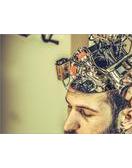Taking Part in Superficial Siderosis Research
Waking up for the Big Day
I woke up to a bad headache, probably a bit of nerves and excitement about going to the best hearing institution in the United Kingdom. After all, I’m a musician and what’s the fun in music without having any hearing? It’s been a difficult journey but reaching out on Twitter to the Joint Royal College of Physicians Training Board (JRCPTB) had put me in contact with a doctor who is doing her PhD on the audio-vestibular (hearing and balance) components of superficial siderosis.
My sole intention of contacting the JRCPTB however, was not that of getting help for myself, but an attempt to make it mandatory or at least advisory for ENT doctors/surgeons and audiologists in the U.K, to screen for superficial siderosis if a patient has had previous head/spinal trauma or surgery and now has unexplained hearing loss. Helping others to avoid this awful condition was my plan. Hearing loss being one of the first noticeable symptoms of superficial siderosis, so it would be best to get diagnosed as early as possible in hopes to prevent progression of the disease.
On the Road
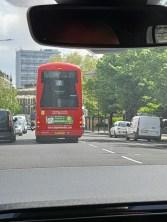
Due to lockdown, I hadn’t really been out of my local area, so crossing the bridge into England was a nice change. The three-hour journey was now underway. I had all sorts of thoughts going through my head. I had been playing my guitar the previous day to see if I could hear anything, but I couldn’t hear a thing, just the feeling of the vibrations on my fingertips as I strummed out ‘Love Walked In’ by Thunder. I love that song.
I had a lot of questions ready to ask for when I got there and had already emailed them to the doctor Natallia I had been in contact with through Twitter. Natallia told me and my mom she would put the questions to her PhD supervisor Professor Bamiou, who is an expert in neuro-otology.
Settled in the car with a bunch of sweets, it was now time for the long straight drive down the M4. I could have easily fallen asleep; it reminded me of the many gigs I’d been to in London, this time though I didn’t have an option to listen to music during the drive there.
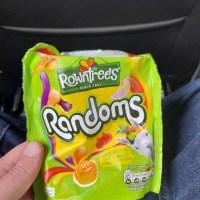
A stop off at the motorway services for a toilet break and coffee. Over halfway there now, and my anxiety was slowly creeping up on me, what will happen? Can they help me? Will I ever get an improvement in my hearing? I know the answer is more than likely not, but with technology and advances in medical treatment, I remained hopeful.
As soon as we made it to London, it was noticeable. Lots of cars on the road, and my dad (who was driving) having to avoid numerous cyclists that clearly weren’t aware of the highway code. Driving in London was always a nightmare when I attended gigs there, so I didn’t envy what my dad had to put up with.
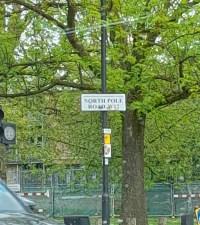
Arriving at the Hospital
Once my dad had parked the car in an old church car park, we locked the gates and walked over to the hospital, which was nearby. My mum, dad and I took the lift (elevator) to the 5th floor and were greeted by Natallia and an audiologist called Amy. Natallia told me Amy would be carrying out the tests, and she would see me once all the tests had been completed.
PTA Test (Pure Tone Audiometric)
Amy took me into a room and carried out a standard hearing test where I had to press the buzzer to hear a sound through the headphones. I could hear and feel like a static shock-like sensation in my right ear, but in my left ear, I could hear nothing. Amy repeated the test on my right ear and told me to press the buzzer when I got the static shock like sound/sensation. I didn’t expect to hear anything, so it was quite a surprise to me, and I also thought my hearing would be better (if at all) in my left ear, as the hearing in my right ear had plummeted a few years before my left side deteriorating.
Amy then carried out a bone conductor test where a sensor was placed on the bone behind my ear, and if I could hear a sound, I had to buzz just like the previous test. I didn’t hear anything through either the right or left side. Amy had told me she expected this.
Vestibular-evoked Myogenic Potential (VEMP) test (C-VEMP and O-VEMP)
- O-VEMP testing
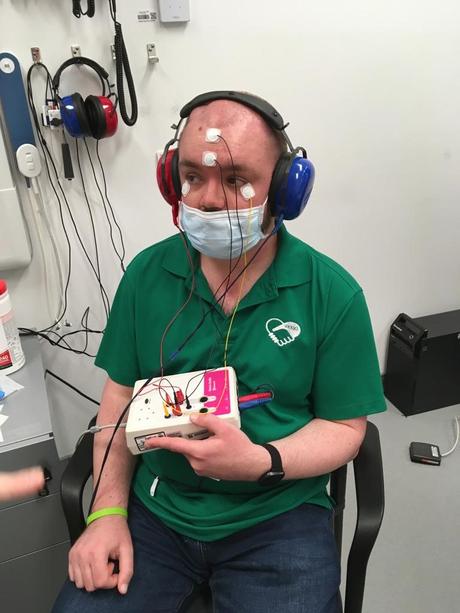
- C-VEMP testing
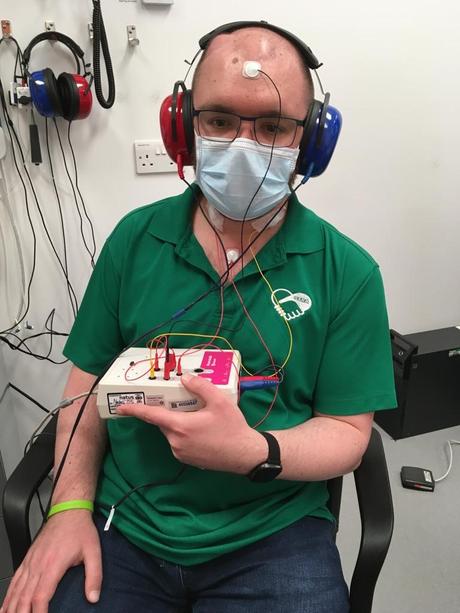
My mum, Amy, and I then went into a room and sensors were stuck on my face and chest to test the muscle response when a sound was played through headphones. I had to look at a needle on a screen and keep the needle in the middle of the green zone as much as I could. I couldn’t hear the sound coming through the headphones but could feel the vibration when it occurred, hence how I knew when to move my head. Amy held my head in the position whilst I kept the needle in place. She said my head was very strong. This was carried out whilst I looked at a screen to the right, then a second time, I looked to a screen on the left. I then did the same thing looking upwards, with sounds played through my right and left ears separately. When doing the vertical movements, I didn’t have a needle to use as a reference point. The sensor stickers were then moved to under my eyes to analyze different muscle responses.
Mum and I went back to the waiting area so Amy could prepare a new test in another room. She came out and told us it would be about 5 minutes.
VNG/ENG testing
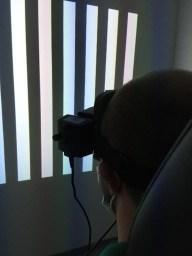
Amy came back and took my mom and me into another room, and I sat on a swivel chair with goggles on. I had to follow the lights on the screen in front of me with my eyes. The goggles had a built-in display, and a further test was carried out where I had to keep my eyes on the light in the corner of the screen when Amy rotated the chair I was sat on. The test was then carried out whilst the screen on the goggles was completely blacked out. I struggled to keep my eyes open the full-time Amy was rotating the chair, so we repeated the test once more, and Amy prompted me if I closed my eyes during testing. Mum and I went back to my dad in the waiting room to get a drink and rest my eyes before Amy called me for the final test.
Caloric Testing
- Caloric Testing
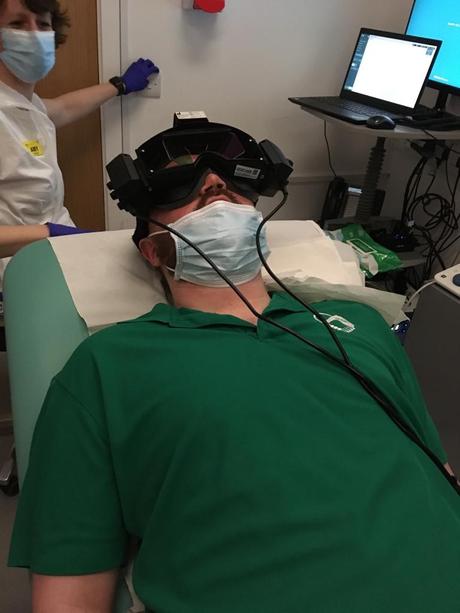
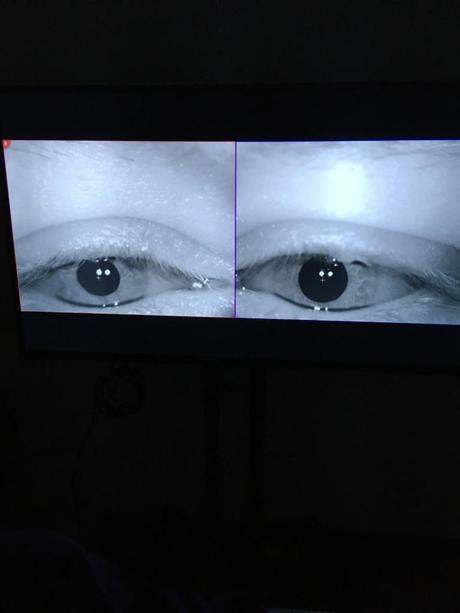
For the final test, I went into a room with Amy and her colleague Faye. I led on a bed, and Amy and Faye pumped 44oc water into my right ear, and I had to keep my eyes open for 30 seconds whilst wearing goggles. It was a weird feeling and gave a burning sensation inside my ear. The same test was then performed on my left ear. Whilst I kept my eyes as still as possible, an image of them was projected onto a big screen, and Amy monitored my eyes and recorded the movements on a graph.
The same test was then carried out with 30oc water, which didn’t give a burning sensation in my ears and was much more tolerable. Faye had left the room, and another lady called Karina was assisting Amy whilst this test was carried out.
After the caloric testing was finished, I led down for a few minutes and Amy removed the goggles. She told me to lie down for a bit as I may feel dizzy. To be fair, I felt completely fine after it, although it was such a strange sensation having water pumped in my ears.
Amy took us back to the waiting room and said goodbye. My mum, dad and I waited for Natallia to come and see me.
Finishing Up for the Day
Natallia came to the waiting area and called my mum, dad and me into a room to discuss the tests. She said once all the results were uploaded on the system, she would get in touch, hopefully by the weekend. Natallia looked into my eyes with a torch, and I told her that I remember in 2018 I had uneven pupils, but she could not see this at the time. I performed some standing balance exercises, and Natallia carried out some neurological examinations.
I gave Natallia a few SSRA/living with SS wristbands. If she needs any more help with her studies from an SS patient perspective, I told her to feel free and drop me an email. We had an elbow bump and said goodbye, then my mum, dad and I left the hospital for the car park. We had paid for parking until 6 pm, and we just managed to get back in time before the ticket ran out. It was now time for the three-hour journey home.
If you would like to contribute to this project, no matter where you live, you may help by completing an online survey for Dr Natallia Kharytaniuk. Visit the Superficial Siderosis Patient Registry, superficialsiderosis.org and look for the UCL Ear Institute survey link.
